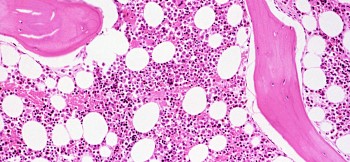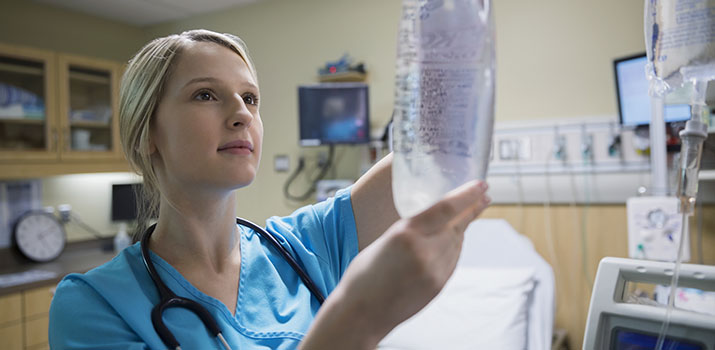Bone Marrow Transplantation (BMT)
Bone Marrow Transplant at BIDMC

Bone marrow transplant treatment is highly individualized and disease specific, depending on the type of blood cancer you have, how advanced it is, and your own personal medical condition and response to therapy.
Likely Scenarios
Typically treatment involves chemotherapy or a combination of different types of chemotherapy, with or without a bone marrow transplant, and radiation therapy in some cases. Some likely treatment scenarios:
- For early-stage Hodgkin's disease, a highly curable cancer, treatment is a combination of chemotherapy and radiation therapy.
- Myeloma may require a bone marrow transplant.
- Lymphoma may require a transplant if the cancer returns.
- For leukemia, if and when to have a bone marrow transplant depends on a range of factors.
- Some patients undergoing a bone marrow transplant may need chemotherapy and/or whole body radiation to destroy diseased bone marrow and create space for new, donated marrow.
Most often, you receive a combination of treatments — care that is tailored just for you, under close supervision from your team of doctors.
Bone Marrow Transplantation
Think of a bone marrow or stem cell transplant as a transfusion of blood and immune cells rather than a surgical procedure.
 What is Bone Marrow?
What is Bone Marrow?
Bone marrow is the soft, spongy tissue inside bones, which is essential for producing three main types of blood cells: red blood cells that carry oxygen, white cells that fight infections and platelets to help with clotting blood. All blood cells develop from very immature cells called stem cells. Most stem cells are found in the bone marrow, although some, called peripheral blood stem cells, circulate in blood vessels throughout the body. Stem cells are also found in umbilical cords.
Bone Marrow vs. Stem Cell
The main difference between a bone marrow and a stem cell transplant is in the method of collecting the stem cells. Bone marrow donation is a surgical procedure, under either general or epidural anesthesia. Donating stem cells is similar to donating blood, through a sterile needle in one arm. The blood passes through a special machine that separates and collects the stem cells, and then returns the blood through the other arm.
Two Types of Transplants
There are two types of bone marrow/stem cell transplants: autologous (patient-derived) and allogeneic (donor-derived transplants, using matched related and unrelated donors, including umbilical cords):
- Autologous stem cell transplants , which are stem cells that come from your own bone marrow or blood. Doctors extract stem cells from your blood or bone marrow, place them in frozen storage, and re-infuse them back into your body following high-dose chemotherapy to eliminate blood cancers.
- Allogeneic stem cell and bone marrow transplants , which are stem cells that come from matched related donors (siblings, for example), or from matched unrelated donors or donated umbilical cords. As a recognized site of the National Marrow Donor Program, BIDMC has access to an international registry of more than 5 million possible unrelated donors.
Dedicated Stem Cell Lab
Our stem cell/immunotherapy laboratory is a key component of our bone marrow transplantation service. A dedicated resource, the stem cell lab:
- Excels in the special and meticulous handling of human cells
- Provides expertise in the collection, storage, and manipulation of bone marrow and stem cell products so they are ready to be transplanted (re-infused) into the patient

